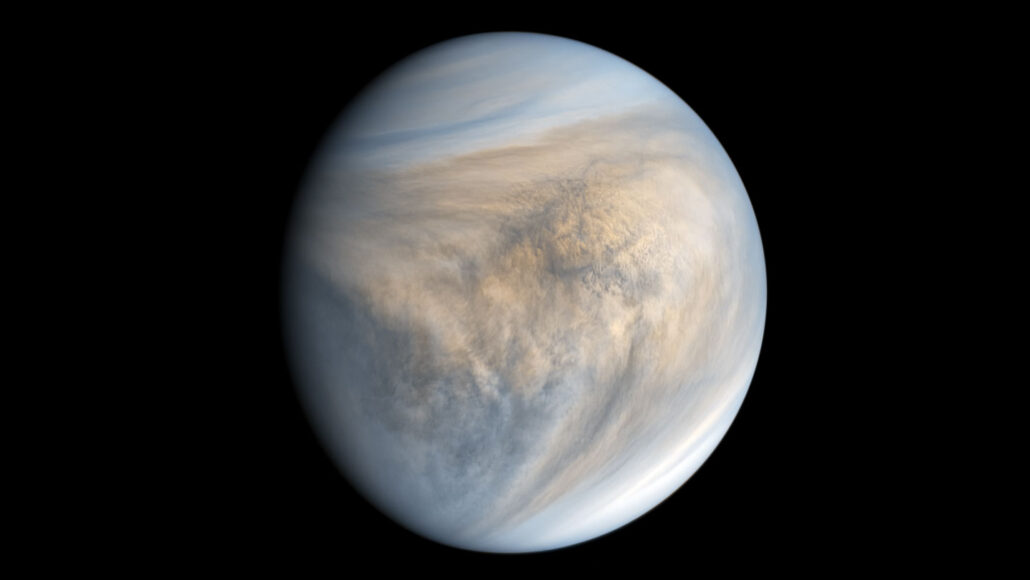Possible Meteors, Not Lightning, Cause Flashes in Venus’ Atmosphere

Occasional flashes light up Venus’ shroud of clouds. Previous analyses have hinted that the bursts of light could be lightning in the hellish world’s atmosphere. But a new study suggests most of the flashes may be nothing more than the brief yet brilliant blazes of meteors.
With upcoming missions planned for Venus, scientists are eager to figure out the light’s origin (SN: 6/2/21). If the flashes are lightning, the electrical phenomenon could pose risks to future probes dropping through the Venusian atmosphere or carried by balloons for extended periods in the planet’s clouds, says Claire Blaske, a planetary scientist now at Stanford University. Small meteors that burn up in the atmosphere, however, wouldn’t pose much of a danger.
Previous landers on Venus have often detected electromagnetic static similar to the type picked up on AM radio and caused by lightning during thunderstorms on Earth, Blaske says. And orbiters and Earth-based telescopes have discerned brief, bright flashes in the atmosphere.
But the static and optical flashes have never been detected simultaneously, Blaske says. And, notes Paul Byrne, a planetary scientist at Washington University in St. Louis who was not involved in the study, “it’s not clear there is the potential for lightning on Venus” given how little is known about the dynamics of its atmosphere.
Blaske, then at Arizona State University in Tempe, and her colleagues wondered whether meteors could be masquerading as lightning on Venus. Two surveys counted the flashes of light: one by a telescope on Arizona’s Mount Bigelow and one by instruments aboard Japan’s Akatsuki orbiter (SN: 12/8/15).
Given that data, there are probably between 10,000 and 100,000 of these flashes each year, the researchers report in the September Journal of Geophysical Research: Planets.
That may seem like too many flashes to all be caused by meteors. After all, Venus is a slightly smaller cosmic target than Earth. But meteors there will be substantially brighter — and thus more noticeable — because they are traveling faster on average: The space rocks zip through Venus’ atmosphere at about 25 kilometers per second, compared with 20.3 kilometers per second for meteoroids entering Earth’s atmosphere. In part, that’s because Venus is traveling around the sun faster than Earth is.
Overall, these factors and others led Blaske and her colleagues to conclude that meteors could be numerous enough to account for most, if not all, of the flashes expected to occur in Venus’ atmosphere.
The team’s analysis “is convincing and does a nice job of establishing a plausible explanation for these flashes,” Byrne says. Future observations that simultaneously measure the flashes and electromagnetic static on Venus could help resolve the mystery. But other big questions remain. For example, it’s unknown whether Venus might experience a form of lightning, or other type of electrical discharge, in its carbon dioxide–rich atmosphere that isn’t accompanied by flashes of light but could still pose a risk to probes.
Our mission is to provide accurate, engaging news of science to the public. That mission has never been more important than it is today.
As a nonprofit news organization, we cannot do it without you.
Your support enables us to keep our content free and accessible to the next generation of scientists and engineers. Invest in quality science journalism by donating today.




